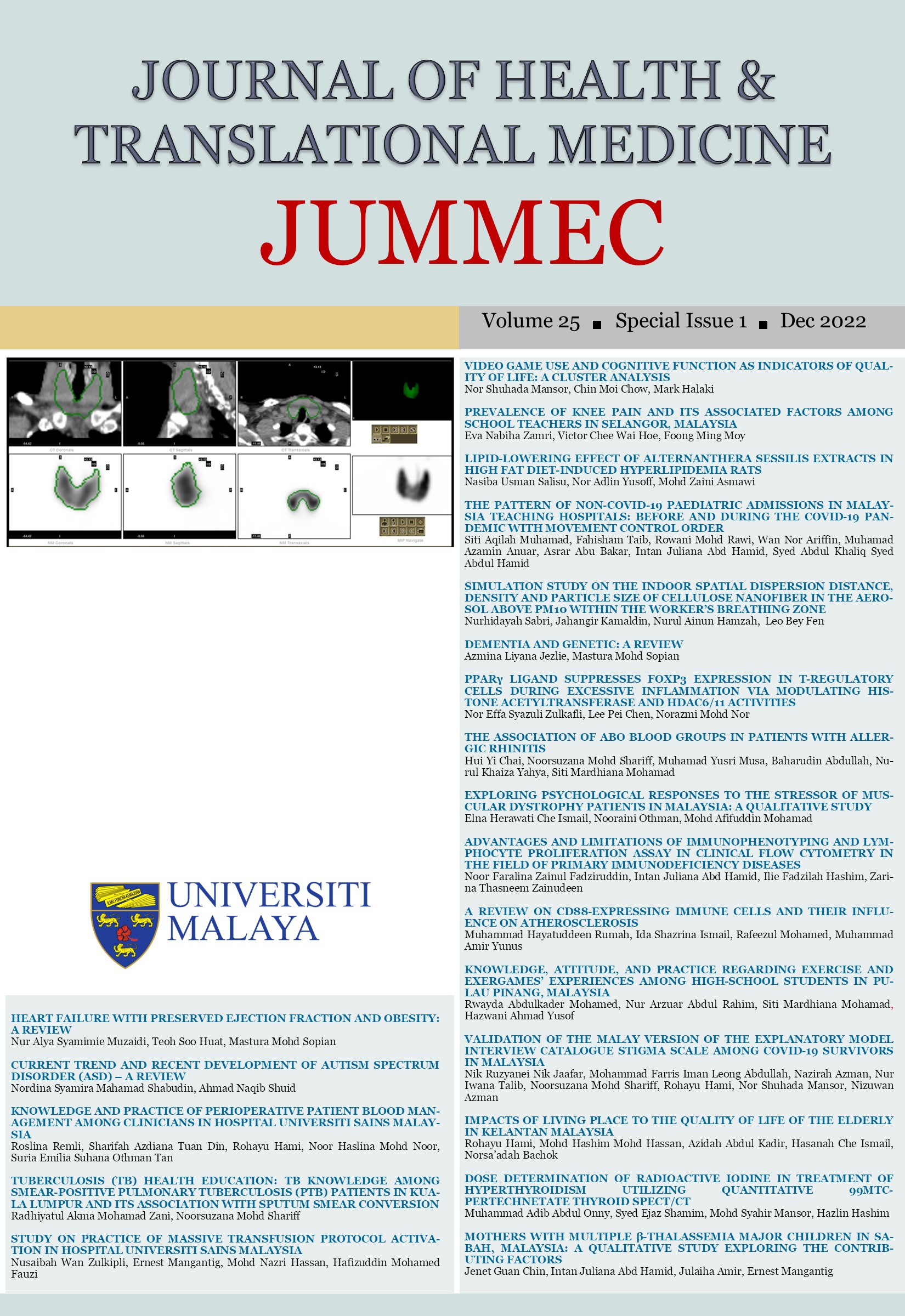HEART FAILURE WITH PRESERVED EJECTION FRACTION AND OBESITY: A REVIEW
Received 2022-01-15; Accepted 2022-10-01; Published 2022-12-31
DOI:
https://doi.org/10.22452/jummec.sp2022no1.17Abstract
Heart Failure with Preserved Ejection Fraction (HFpEF) is becoming more common as the United States (U.S.A) population ages, along with the present of obesity pandemic. In general, HFpEF is the most common type of heart failure (HF) found in general population, however, the elderly, especially women are mostly suffering from it. It is primarily caused by obesity, hypertension, coronary artery disease, and diabetes. Obesity is frequent in individuals with HFpEF. However, it may constitute a distinct phenotype of HFpEF, with distinct hemodynamic and anatomical problems. Obesity causes a systemic inflammatory response which can lead to cardiac fibrosis and endothelial dysfunction. Because most obese patients are still excluded from HFpEF clinical trials, further research is needed to evaluate the role of pharmacologic and interventional treatments in this expanding group. Thus, this review study will aid in the understanding of HFpEF and its association with obesity.
Downloads
Downloads
Published
Issue
Section
License
All authors agree that the article, if editorially accepted for publication, shall be licensed under the Creative Commons Attribution License 4.0 to allow others to freely access, copy and use research provided the author is correctly attributed, unless otherwise stated. All articles are available online without charge or other barriers to access. However, anyone wishing to reproduce large quantities of an article (250+) should inform the publisher. Any opinion expressed in the articles are those of the authors and do not reflect that of the University of Malaya, 50603 Kuala Lumpur, Malaysia.


